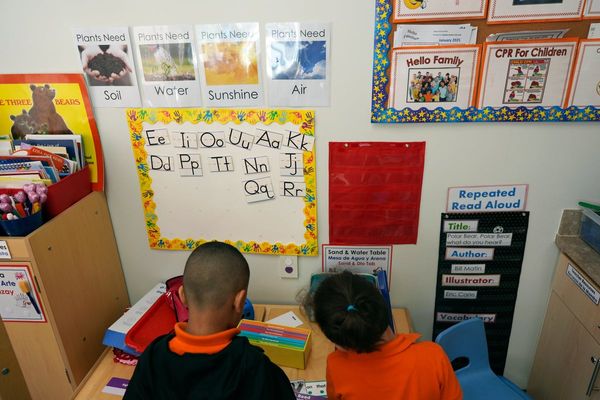
Gold and silver futures trade on the Chicago Mercantile Exchange’s COMEX division, while the CME lists platinum and palladium futures on the NYMEX division. While the four metals are rare and precious, gold and silver have more financial applications than the two leading platinum group metals with many industrial applications. Moreover, gold and silver futures are highly liquid, while platinum and palladium futures have far lower volume and open interest levels. Gold and silver annual production is much higher than platinum and palladium output. Lower liquidity and limited supplies can cause the platinum group metals to have far more volatility than gold and silver.
The equally weighted precious metals sector moved 6.14% lower in Q4, with only gold posting a marginal gain. The sector was 5.19% higher in 2024. Gold and silver prices posted significant gains, while platinum and palladium prices suffered substantial declines.
Gold leads on the upside in Q4 and 2024- New record highs in Q4
Gold led the precious metals sector in Q4 with a marginal 0.19% gain and was the only sector member to move higher in Q4 2024’s final quarter. Meanwhile, gold also led the sector on the upside in 2024 with a 27.47% gain as the yellow metal rose to a new record high at over $2,800 per ounce.

The quarterly COMEX continuous futures contract chart highlights gold’s ascent since the 1999 low. The quarter-of-a-century bull market continued in 2024, with continuous contract gold futures settling at $2,641.00 per ounce after trading to a $2,801.80 high. Gold prices were slightly higher in early Q1 2025.
Silver rises to a multi-year high in 2024- A decline in Q4 but a significant rise in 2024
While COMEX silver futures declined 7.04% in Q4 2024, the second most liquid precious metal posted a 21.41% gain in 2024.

The continuous quarterly COMEX silver futures chart displays silver’s rise to $35.07 per ounce in Q4 2024, the highest price since Q4 2012. Silver ran out of upside steam at the highest price in a dozen years and settled 2024 at $29.242 per ounce. Silver was higher in early 2025, with the price above the $30.80 per ounce level, and the bullish trend since the 2020 low at $11.64 remains intact.
Platinum futures fall in Q4 and 2024
Platinum, the precious metal once called “rich person’s gold,” has lagged gold prices for years. The last time platinum’s price was higher than gold was over a decade ago.
In Q4 2024, platinum futures on the CME’s NYMEX division fell 8.68% and were 10.15% lower in 2024.

The continuous quarterly NYMEX platinum futures chart shows that while platinum futures declined in Q4 and 2024, the price has been trading in a narrowing range as platinum prices consolidate. Nearby futures settled at $894 per ounce on December 31, 2024 and were higher in early 2025.
Palladium leads the way on the downside in Q4 and 2024
Palladium, the other leading platinum group metal, led the precious metals sector on the downside in Q4 and 2024, with 9.04% and 17.98% respective declines.

The continuous quarterly NYMEX palladium futures chart illustrates palladium’s significant decline from the early 2022 record $3,425 per ounce high. Russia is the world’s leading palladium producer. Russia’s 2022 invasion of Ukraine caused supply concerns that lifted the precious metal to a record peak. Since then, palladium prices have plunged to under one-third of the price at the high. Nearby palladium futures settled Q4 at $909.80 per ounce.
The prospects for precious metals in 2025- GLTR is a diversified physical ETF product
Gold, silver, platinum, and palladium prices move into 2025 with different technical dynamics. Gold and silver are in multi-year bullish trends, while platinum and palladium’s path of least resistance remains bearish. Palladium is in a significant downtrend, while platinum prices are consolidating near the lows. However, the platinum group metals have many industrial applications and offer significant value compared to gold and silver at the current price levels.
A diversified approach to precious metals investing in 2025 could favor the Physical Precious Metals Basket ETF product (GLTR). GLTR’s fund summary states:

At $112.50 per share, GLTR had nearly $1.071 billion in assets under management. GLTR trades an average of 34,005 shares daily and charges a 0.60% management fee. The most recent top holdings include:

GLTR owns more gold and silver than platinum and palladium on a percentage basis, which accounts for the ETF’s positive performance in 2024.

The monthly chart illustrates the GLTR ETF’s 3.08% decline in Q4 and its 20.6% gain in 2024. The gains in gold and silver prices pushed GLTR higher to settle at $109.80 per share in the year that ended on December 31, 2024. GLTR was higher in early 2025.
GLTR is an effective way to gain exposure to precious metals. The ETF’s expense ratio covers the storage and insurance costs of holding precious metals.
The trend is always a trader or investor’s best friend, and it remains higher in gold and silver in early 2025. While the path of least resistance for gold and silver remains higher, platinum and palladium offer value as their prices are at levels that are inexpensive compared to their precious cousins.







